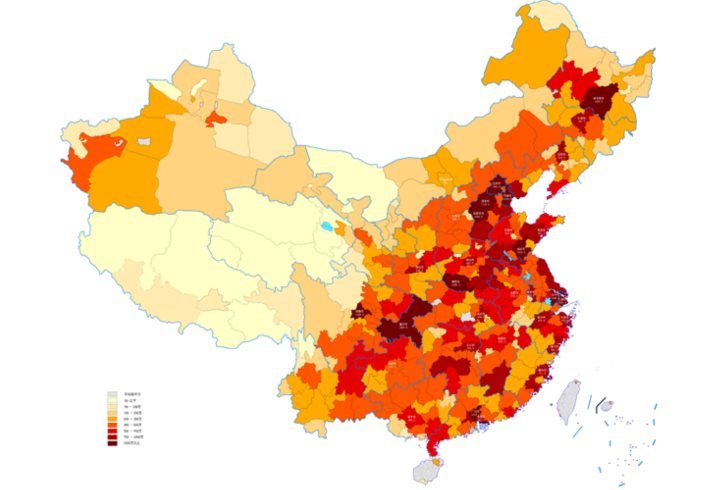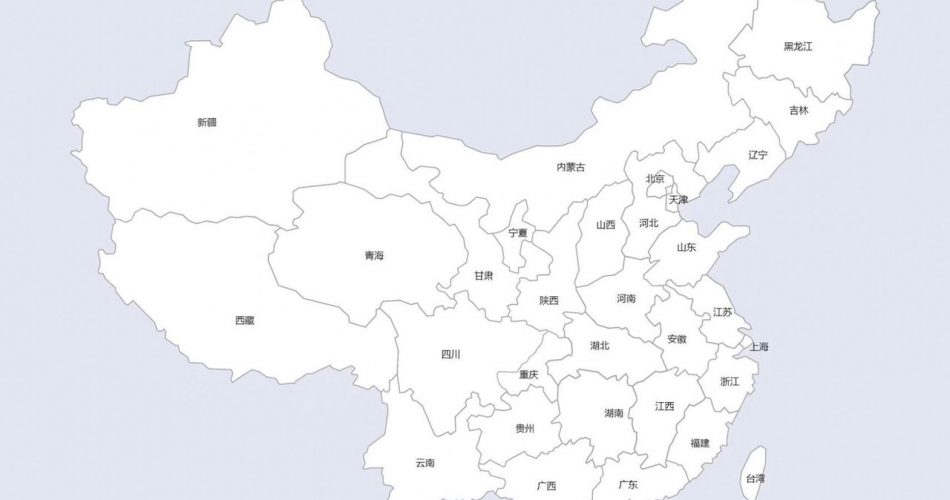The time zone is the standard time used by various regions on Earth, which is based on the actual needs of different regions. The main purpose of the time division is to coordinate time globally, making it easier for people to live, work, communicate, and collaborate.
However, China has a vast territory spanning five different time zones, so how does China determine the division of each time zone?
The following sections will reveal eight important facts about China’s time zone from multiple perspectives. After that, you can know what Shanghai time is and what people mean by asking the local time.
Table of Contents
- 1. Division of Global Time Zones
- 2. What is China Standard Time (CST)?
- 3. The Historical Evolution of China’s Time Zone
- 4. How Many Time Zones Does China Cross?
- 5. Why Does China Only Use One Standard Time Zone?
- 6. Do Hong Kong, Macau, and Taiwan in China also use Beijing time?
- 7. Why Does China Use the Eastern Eighth District as the Standard Time?
- 8. Why Hasn’t China Implemented Daylight Saving Time?
- Q&A Chinese Time Zone
1. Division of Global Time Zones
To unify time, the method of dividing the world into 24 time zones at intervals of 15° longitude is adopted internationally.
Also known as the prime meridian, the longitude of the Greenwich Observatory in the UK is 0° longitude. The zero time zone is determined by dividing the 0° longitude line by 7.5° to the east and west sides.
Moreover, the time zone is divided into East Zone 1 to East Zone 12 in order of 180° to the east and West Zone 1 to West Zone 12 in order of 180° to the west. The East 12th District and the West 12th District each span a longitude of 7.5°, both of which are half-time zones.
It is worth noting that the Eastern and Western Districts are combined into one time zone, with the same time zone but different dates. The difference between the two is exactly twenty-four hours.
2. What is China Standard Time (CST)?
China Standard Time, also known as Beijing Time, is abbreviated as CST. It uses the district time of “Eastern Eight District” as the standard time.
Beijing time is not the local time of Beijing (116.4° E), but the local time of 120° E.
It has an eight-hour time difference from Greenwich Mean Time (GMI).
3. The Historical Evolution of China’s Time Zone
From 1912 to 1949, China was divided into five time zones: Kunlun Time Zone (GMT+05:30), Xinjiang Time Zone (GMT+06:00), Longshu Time Zone (GMT+07:00), Zhongyuan Time Zone (GMT+08:00), and Changbai Time Zone (GMT+08:30). Different places use the corresponding local time as a reference for daily activities.
In 1949, China used one unified time, namely Beijing Time (GMI+8).
In 1950, the local people’s congress in Xinjiang set Urumqi time (UTC+6) for the convenience of the people.
For example, Beijing time was 8 o’clock and Urumqi time was 6 o’clock. China uses Beijing time uniformly except for Tibet and Xinjiang.
However, later on, to facilitate communication among various ethnic groups and regions, Xinjiang and other places used Beijing time.
4. How Many Time Zones Does China Cross?
Different countries around the world have different land areas and distribution regions, so the number of time zones they cross also varies.
Among them, France has crossed 12 time zones, becoming the country with the most time zones globally, because it has many territories worldwide.
Besides, with the highest cross longitude in the world, Russia spans 11 time zones.
Although China has a large land area, it spans relatively few time zones compared to the two mentioned above, only spanning five time zones, namely Eastern Fifth District, Eastern Sixth District, Eastern Seventh District, Eastern Eighth District, and Eastern Ninth District.
The range covered by each time zone also varies greatly.
Among them, the Eastern Fifth District mainly includes the southwest of Xinjiang and the northwest of Tibet;
The Eastern Sixth District mainly includes most of Xinjiang, most of Tibet, western Gansu, and western Qinghai;
The Eastern Seventh District mainly includes western Inner Mongolia, Ningxia, eastern Gansu, Shaanxi, western Shanxi, western Henan, western Hubei, western Hunan, Sichuan, Chongqing, Yunnan, Guizhou, Guangxi, western Guangdong, and Hainan;
The Eastern Eighth District mainly includes eastern Inner Mongolia, western Heilongjiang, western Jilin, Liaoning, Hebei, Beijing, Tianjin, eastern Shanxi, Shandong, eastern Henan, Anhui, Jiangsu, Shanghai, eastern Hubei, eastern Hunan, eastern Guangdong, Jiangxi, Zhejiang, Fujian, and Taiwan;
The Eastern Ninth District mainly includes the eastern part of Heilongjiang and the eastern part of Jilin.
It is worth noting that China only uses one standard time, which is the district time of the Eastern Eighth Districts, also known as Beijing time.
5. Why Does China Only Use One Standard Time Zone?
Many countries worldwide adopt a standard time zone for time management by unifying standard time for countries such as South Korea, North Korea, and Japan. China is no exception, but there are some unique reasons for the use of standard time.
Firstly, China has a vast territory and a large population, and adopting a standard time zone helps unify national management and reduce potential time zone disputes and disagreements between regions.
Multiple time zones may increase the complexity and management difficulties of government, transportation, communication, and other aspects.
Secondly, China has a long history and cultural traditions, and a unified standard time zone helps maintain domestic unity and cultural identity, promoting economic and social coordination.
Multiple time zones may lead to confusion in communication between different time zones, business activities, and other aspects.
Of course, some countries in the world do not have a unified time zone, mainly because these countries cross too many time zones and there are significant time differences.
A unified time zone will seriously affect the lives of residents in various regions, such as Russia, Canada, the United States, and so on.
Although Russia adopts the Moscow time externally, each city of this country still follows the standard time in its own time zone. This has also led to an interesting phenomenon, where Russians have two New Years within a year, the one being the local time, and the other one being the Moscow time.
6. Do Hong Kong, Macau, and Taiwan in China also use Beijing time?
Beijing time also applies to Hong Kong, Macau, and Taiwan.
Although Hong Kong, Macao, and Taiwan have their own local time, they also use Chinese standard time in their daily life and business activities to unify exchanges and coordination with the Chinese Mainland.
7. Why Does China Use the Eastern Eighth District as the Standard Time?

Although China has a vast territory and spans five time zones, its population is mainly distributed in the three time zones of Eastern Sixth, Eastern Seventh, and Eastern Eighth Districts.
The unified time of Eastern Eighth District can bring more convenience to people’s lives.
8. Why Hasn’t China Implemented Daylight Saving Time?
Daylight Saving Time, also known as Summer Time, is a time system in which the time is set by human beings to save energy. The unified time used during the implementation of this system is called “Summer Time”.
Due to the movement of the direct sunlight point, summer days are longer and nights are shorter. Therefore, by manually adjusting the time one hour earlier, the daylight resources are fully utilized, thereby saving lighting electricity.
Nearly 110 countries around the world use daylight saving time every year, such as Russia, the United States, Switzerland, and New Zealand.
China used daylight saving time in the 20th century, but it later abolished this policy in 1991.
Firstly, one of the main purposes of adopting daylight-saving time is to save energy. However, China has a vast territory, and the energy-saving effect of daylight-saving time is relatively small.
Secondly, there is a large population in rural China, and the working time of people is closely related to the natural changes of day and night.
The adoption of summer time may influence rural life and crop cultivation, so the government may decide to abolish summer time with the actual situation of rural residents taken into account.
Finally, China has a long historical and cultural tradition, and people’s lives and schedules are often related to the rise and fall of the sun. Daylight Saving Time may require people to adapt to changing schedules, which may bring inconvenience to them.
Q&A Chinese Time Zone
Q1: What is GMT? What is UTC?
A: GMT, also known as Greenwich Mean Time. It is based on the prime meridian and has relatively low accuracy. UTC, also known as Coordinated Universal Time. It is based on the atomic clock length and is more scientific and accurate than GMT.
Q2: What is the local time?
A: Local time refers to the time measured by local longitude. However, various regions in China generally do not use local time as a reference and conduct various activities based on Beijing time.
Q3: What is the time difference between the east and west of China?
A: 4 hours. The easternmost part of China is located in the Eastern Ninth District and the westernmost part is located in the Eastern Fifth District, with a time difference of four time zones or four hours.
Q4: What is the local time equivalent to 8:00 Chinese Standard Time (Beijing Time) in Shanghai, Beijing, Guangzhou, and Hong Kong?
A: It is equivalent to 8:05 local time in Shanghai, 7:44 local time in Beijing, 7:32 local time in Guangzhou, and 7:36 local time in Hong Kong.
Q5: What time is 8:00 in Chinese Standard Time (i.e., 8:00 Beijing Time) equivalent to New York?
A: The previous day at 19:00. Beijing time is in the Eastern Eighth District, while New York is in the Western Fifth District. The difference between the two is 13 time zones, or 13 hours, which means Beijing time is 13 hours faster than New York time.
Q6: What time is 8:00 Chinese Standard Time (i.e., 8:00 Beijing Time) equivalent to London?
A: 0:00. New York is located in the zero time zone, with a difference of 8 time zones between the two, which means Beijing time is 8 hours faster than New York time.
